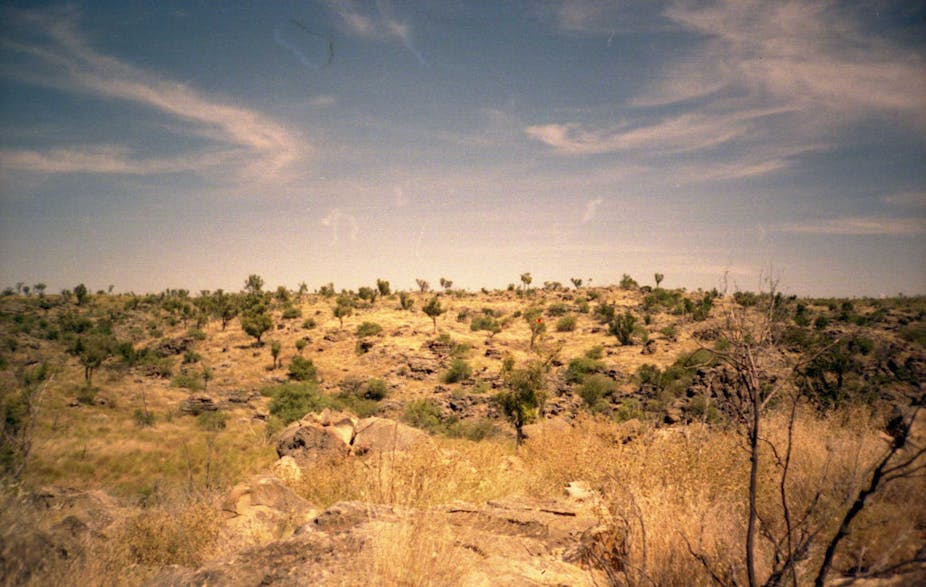Australia is famous for its natural beauty: the Great Barrier Reef, Uluru, Kakadu, the Kimberley. But what about the places almost no one goes? We asked ecologists, biologists and wildlife researchers to nominate five of Australia’s unknown wonders.
Riversleigh is a remarkable natural history museum, but without the queues of visitors, gift shops selling plastic dinosaur figurines and carefully reconstructed bones behind display glass. It is remote, sun-baked solitude. The only thing that one can spend at Riversleigh is time – the currency by which evolution created the life forms that now lie entombed within its limestone outcrops.

The fossil fields of Riversleigh in far north western Queensland provide one of the world’s richest Oligo-Miocene faunal records, linking this period (15 to 25 million years ago) to the modern assemblages of later geological epochs.
The first European to note the presence of fossil bones at Riversleigh was WE Cameron in 1900. However it was not until the mid-1970s that its treasure trove of paleontological riches truly began to be uncovered. In 1994, 10,000 hectares of the fossil fields – comprising part of Boodjamulla National Park – gained World Heritage status (along with Naracoorte Caves in SA), based on their contribution to the understanding of key stages in the evolution of Australia’s fauna. Nonetheless, outside of the scientific community, relatively few Australians are even aware of the fossil fields, let alone their significance, despite the fact that David Attenborough has described Riversleigh as one of the four most important fossil deposits in the world.

Among the most common fossil remains found at Riversleigh are the tiny bones and teeth of microchiropteran bats. Millions have been recovered and identified as belonging to more than 35 different kinds of bats. Before the discovery of Riversleigh’s deposits in 1978, Australia’s entire Tertiary fossil bat record consisted of just two isolated, unidentified teeth.
Ancestors and representatives of some of Australia’s best known species are found in Riversleigh. Kangaroos, rat-kangaroos, bandicoots, wombats, marsupial moles, thylacines, dasyurids, koalas, possums, pygmy possums, cuscuses, rodents and platypuses have all been found in its hot, dry plains. These fossils have provided the basis for documenting the development of Australia’s distinctive mammal fauna, as the continent’s relative isolation for at least the last 35 million years formed a laboratory for the production of unique biodiversity.

Our appreciation of Australia’s modern native mammal fauna grows with the slow unravelling of the history of their ancestors. Places like Riversleigh allow us to delve into the deeper reaches of evolutionary time and see that species have their being not just in the constricted present, but as a product of eons of biotic enterprise.
For example, until 1971, we had very little understanding of the history of Australia’s platypus (Ornithorhynchus anatinus). Major discoveries, including the complete skull of a pre-historic platypus (Obdurodon dicksoni) from 15 to 20 million year old Riversleigh deposits, helped to change this. While ecologists regard the conservation status of the modern platypus – the only surviving descendant of Obdurodon - as being relatively secure, there is concern that the paleontological record tells a different story.

Compared to Obdurodon dicksoni, the modern platypus has become highly specialised with the loss of its teeth, reduction in body size and simplification of its cranial anatomy. When a group loses its generalised body form and edges too far out on an evolutionary limb, the chances of that limb being pruned from the tree of life tend to increase. Moreover, the fossil record of rapid decline over just the last 15% of its known history suggests that on an evolutionary timescale, the platypus is an animal just holding on at the twilight of a long history.
Adding to the prehistoric menagerie at Riversleigh are fossils of the now extinct diprotodontids, ilariids and wynyardiids. One of the most enigmatic finds at Riversleigh has been the fossil remains of a creature so bizarre it was initially dubbed “Thingodonta” by researchers. It has now been given the more respectable name of Yalkaparidon, and based on its distinctive characteristics, had to be placed in an entirely new order – the Yalkaparidontia. Two separate species are recognised - Y. jonesi and Y. coheni, and very little is known about either although it has recently been suggested that they may have been the mammalian equivalent of woodpeckers.

The wonder of Riversleigh should not be interpreted merely in terms of a catalogue of new species. In his book detailing the findings of expeditions to Riversleigh, palaeontologist Professor Michael Archer observed:
Despite the extraordinary variety of previously unrecognised species documented in Riversleigh’s fossil record, we have not in fact discovered a single new, distinct creature! This seeming paradox stems from an awareness that LIFE – the whole colossal thing that is, was and will be – quite literally is one gigantic time-travelling creature.
It becomes easier for one to bridge the gulf across time and comprehend the unity of life forms at Riversleigh; where representatives of so many of its occupants throughout its long transition from lush rainforest to woodland lie immortalised in the rocks all around you. The geological processes that created Riversleigh’s fossil deposits still operate to this day. The tide of living things continues to be inscribed within its lithic notebook, perhaps one day to be read by our unimaginably distant descendants.
Next: Wolfe Creek Crater. Read all the unknown wonders here.


